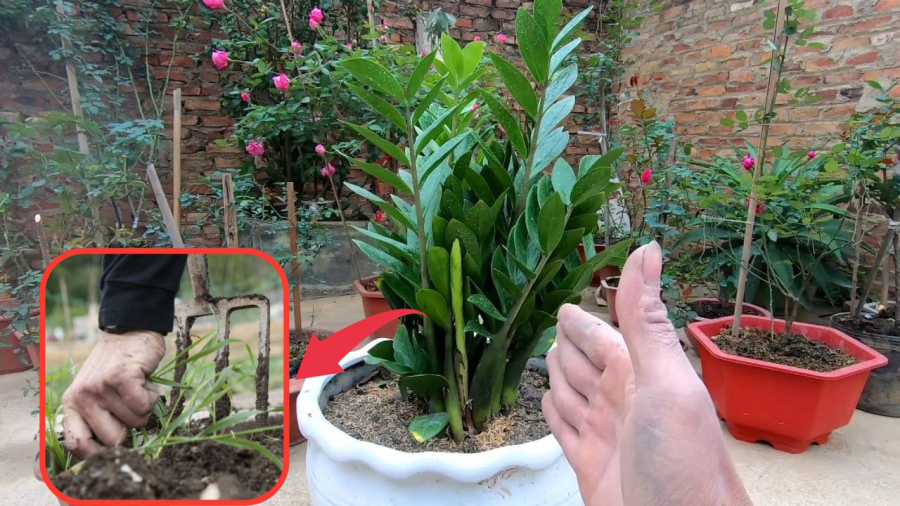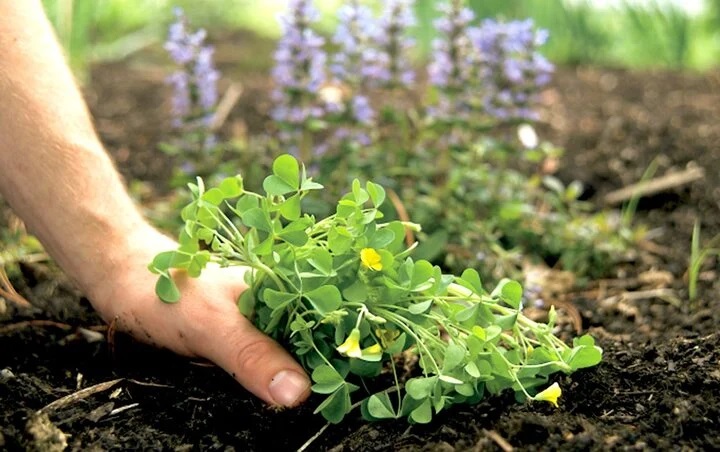Many people who enjoy gardening feel annoyed when they discover that weeds are growing abundantly in their pots. These weeds not only take away nutrients from the plants but also take up space that is meant for the plants’ growth. However, skilled gardeners do not indiscriminately pull out weeds from their plant pots, but instead consider leaving them to reap some benefits.

Weeding in potted plants
Why shouldn’t you pull out weeds from your plant pots?
Previously, gardeners believed that weeds would compete with plants for nutrients, therefore they tried every method to eradicate them. However, this mindset is changing as they realize that keeping weeds can be an effective way to protect plants and improve soil quality. That is why you shouldn’t casually pull out weeds from your plant pots.
There are several benefits of having weeds in your potted plants:
Indicate the nutrient and water levels in the pot
These weeds serve as a water gauge and indicate the soil’s moisture level. You can observe the dry and wet conditions of the soil through the weeds and have reference information for daily watering. Usually, upright weeds indicate the soil is not lacking water, while withered weeds indicate relatively dry soil.
The roots of weeds, in general, are relatively developed, which helps quickly reflect the soil’s fertility status. This helps us determine the dryness, moisture, and nutrient levels of the soil in the plant pot.
In addition, weeds help regulate soil nutrients. When they are pruned or naturally die off, weeds return nutrients to the soil. Weed roots and debris, when decomposed, improve the organic matter in the soil, making it richer and more fertile.
Combat root rot
In fact, weeds can also prevent root rot in potted plants. Root rot disease mainly occurs in climates with high temperatures and humidity, continuous rainy and sunny days.

Weed roots help keep the soil loose, well-aerated, allowing more O2 and CO2 to penetrate deeper into the soil, making it easier for plant roots to breathe and absorb nutrients.
Furthermore, weeds help improve soil moisture, allowing water and nutrients to penetrate deeper and limiting water evaporation during hot weather. They also prevent root rot when the plants are either water deficient or waterlogged. These are some of the reasons why you shouldn’t pull out weeds from your plant pots.
Enhance soil quality
Keeping weeds creates a favorable environment for soil microorganisms to develop and improve soil quality more effectively, protecting plants from fungal attacks.
Ground cover helps limit the leaching of alkali metals, contributing to stabilizing soil pH. Additionally, some types of weeds have the ability to repel pests or attract natural predators.
Identify the growth conditions for plants

Leaving a few weeds can help you grasp the ventilation and lighting conditions of the plant’s location, beneficial for improving the plant’s environment.
Although they are weeds, they also have their own unique growth characteristics. If they get worse over time, it means the environment in that location is not ideal. It is best to relocate your plant pot.
These are the reasons why you shouldn’t casually pull out weeds from your plant pots and instead leave a few to take advantage of their benefits.

































